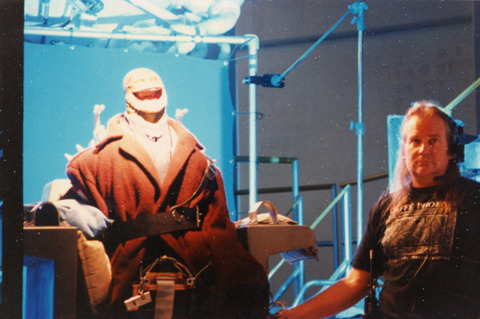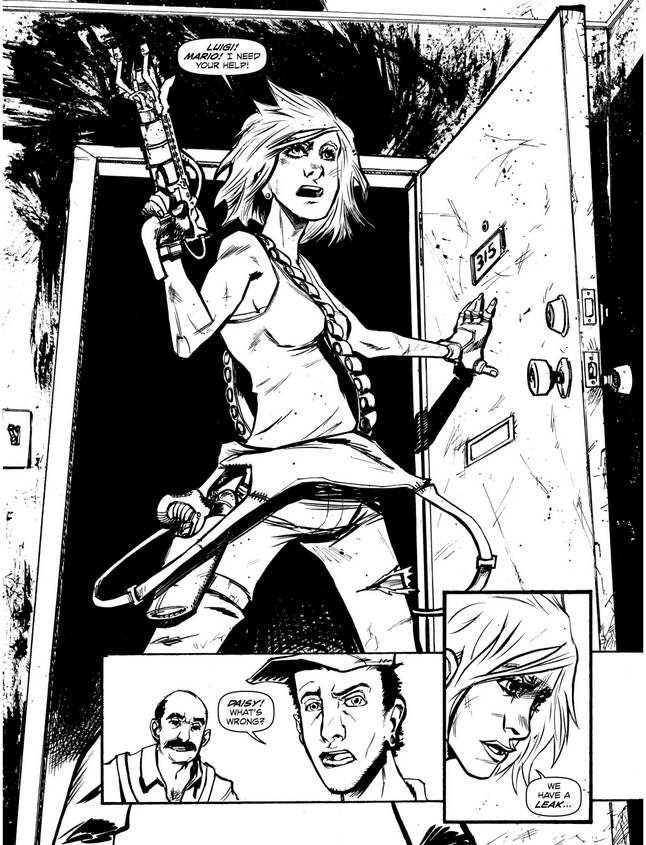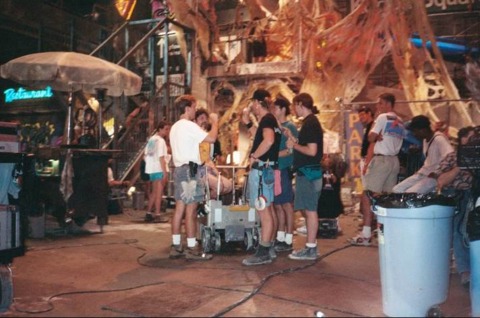The last thing one might expect is a sequel to the Super Mario Bros. movie, yet that’s exactly what’s happening with Super Mario Bros. 2: The Comic.

Super Mario Bros. 2: The Comic is fan fiction in the sense that two hardcore fans are writing it, but it has more interesting roots than that. One of the original screenwriters, Parker Bennett, has directly contributed the project. Pages are rolling out on a weekly basis, and you can even read it now.
Super Mario Bros. arrived in theaters two weeks before Jurassic Park. The only time Nintendo allowed one of its properties to be adapted by Hollywood, Super Mario Bros. was a box office bomb in every respect. It’s a film left to aisles of discarded VHS tapes, only to be unearthed when a group of people have had enough to drink to convince themselves it’s worth watching.
Unless, of course, you’re Steven Applebaum and Ryan Hoss, the longtime maintainers of the website Super Mario Bros: The Movie Archive. Whatever you want, these guys have it. Scripts, storyboards, concept art, interviews with the cast and crew--Applebaum and Hoss have spent years of their lives chronicling a movie that became a footnote to just about everyone else.
“I like the concept,” said Applebaum. “I feel it’s something that hasn’t been done very often. Dinosaurs, parallel dimensions, cyberpunk--all these interesting elements that kind of sort of mesh together but not really. Then, you throw in the Super Mario Bros. and it just gives it so much more appeal. [laughs]”
(You can listen to my entire interview on the Interview Dumptruck, by the way.)
The site has been around since March 2007, though Applebaum didn’t become involved until four years ago. He can’t think of a reason why, but Applebaum had Super Mario Bros. pop into his head, and came across Super Mario Bros: The Movie Archive during a Google search. He reached out to the site’s operator, Hoss, and asked if he needed any help. Applebaum quickly realized the two had mined whatever it could out of what the Internet could currently offer concerning the film, and started scheming to dig up new info on their own.

Applebaum started in the obvious place: IMDB. This would generate enough information for a Google search to pop up contact details for various people involved in making the movie. When that well went dry, the two signed up for an IMDB Pro account, which provides members with access to additional contact information. This proved extremely fruitful for tracking people down.
Of the folks Applebaum and Ross were able to contact, only only person turned them down: cinematographer Dean Semmler.
“He refused to be interviewed because he said he didn’t think it was his film, and he didn’t have the right to be interviewed about it,” said Applebaum.
Others, however, were much more accommodating. Richard Edson (Spike), Mojo Nixon (Toad), a series of background cast, and plenty of the production crew were more than willing to open up about it.
“Most of the people were very happy about it because, at the time, it was a very revolutionary movie,” said Applebaum. “They were introducing a lot of great special effects that hadn’t been done before, and they had these really talented actors, and it was a project they were proud to work on. Of course, it was going to be disappointing that it didn’t do well and that people didn’t like it for the most superficial reasons, so the fact that we were interviewing them, giving them a chance to talk about everything they did, it really helped them to share what they contributed and what they felt was important to the industry.”
But it would be impossible to talk about Super Mario Bros. without acknowledging how much of a circus filming the damn thing was. Grantland ran a phenomenal retrospective piece on the film back in April, in which it combed through a series of reports about Super Mario Bros. that described a production in chaos:
“The cast was basically in revolt," reported Grantland. "The actors would shove each day's new pages aside unread. Hoskins and Leguizamo swilled scotch together between takes, leading to an on-set accident in which Leguizamo drunkenly crashed a truck and Hoskins broke his hand. By the time Stayton got there, the disgruntled performers had abandoned any effort to put on a happy face. When Stayton told Hopper the directors declined to speak to him for the story, the actor responded,‘That's the only intelligent thing I've heard that they've really actually done.’”
Actor John Leguizamo played Luigi in the film, and he dedicated an entire chapter to ripping the film apart in his autobiography, Pimps, Hos, Playas, And the Rest of my Hollywood Friends.
"Oh man that movie sucks,” he said. “And I suck in it."
Of course, that didn’t stop Leguizamo from recording a video for fans who showed up to a 20th anniversary screening of the movie organized by Super Mario Bros: The Movie Archive in May.
Despite the snark surrounding the film, including some from yours truly, it definitely has a fan base, and it’s what kept Applebaum and Hoss going with the site. It’s why it continues to be updated in 2013, and it’s why the two of them are collaborating on producing an unofficial sequel through comics.
“Every time that we came out with some new information, we might end up getting an article or a mention on Twitter, that kind of thing. We always had a positive fan response,” said Applebaum. “There was always someone that said that they liked the movie and they felt they were the only fan. It pushed us forward.”
Applebaum and Hoss started considering a sequel to three years ago. While interviewing screenwriter Parker Bennett, the two asked about a follow-up. In the film, King Koopa is defeated, but Princess Daisy stayed behind to close the portal into Mario and Luigi’s world. In the closing moments, Daisy showed up at Mario and Luigi’s apartment with a flamethrower and asks for their help again. Reportedly, this cliffhanger was a tribute to Back to the Future, and not much consideration was given to where a sequel would go.
“But we asked him [Bennett] what he would have done if given the opportunity, and he gave these broad points about the consequences of the first film and the themes that they would have explored,” he said. “It triggered this huge discussion between me and Ryan Hoss, and we said ‘it’d kind of fun to visit those different ideas, and give something for the fans to appreciate.’ So we re-contacted Parker Bennett, and talked to him in more detail. He gave us a lot of backstory, and built up this whole idea of what could have happened.”

In the comic, Daisy has returned to the desert surrounding her city, in hopes of restoring water for her people. She soon discovers an underground machine that links her world to yet another, and a set of enemies flood in. Mario and Luigi are recruited to save Daisy and her people once again.
Applebaum said their sequel draws upon numerous elements that were intended to be included in the film but were cut during its haphazard production, which often included on-the-fly script rewrites and scene changes to accommodate the bloated budget.
Between the two of them, they’ve probably seen the movie well over 50 times. Having obsessed over the film for so long, stepping into the role of creating new fiction in that world was bizarre.
“It was a little strange, but after having seen the film so many times between us, it started to become very comfortable” he said. “We have this understanding of who the characters were, what they were about, and what they would do in a given situation. Over time, the scenes just started to script themselves, and the dialogue came naturally.”
This journey started more than three years ago, and will likely continue for several more. The script is currently more than 100 pages long, and it will take them more than a year to see the current project through. Naturally, the pair have already started to think about what comes next.
“We do have plans, after this comic, to work on a final chapter to the story that ends it on a trilogy note,” said Applebaum. “After that, we are hoping that people would be interested in contributing to a sort of expanded universe stories, which we think would be really interesting, because there’s a lot of different characters and side stories to explore."
(Thanks to Super Mario Bros.: The Movie Archive for the images featured in this story.)